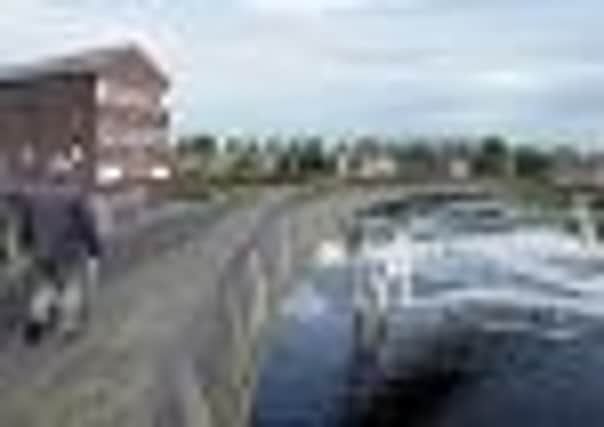Profile on...


ONLY three miles separate Pontefract and Castleford but, despite many outward similarities, they are very different towns. They may share a local newspaper – but in one town the Pontefract and Castleford Express is invariably referred to as the “Pont ‘n’ Cas”, while on the other side of the M62, newsagents will usually be faced with a request for the “Cas ‘n’ Pont”.
Pontefract is the classic medieval castle town: one-time seat of the DeLacy barons, possessor of a market charter dating back to 1257, a key Royalist garrison during the English Civil War and the place where Richard II met his death in 1400.
Advertisement
Hide AdAdvertisement
Hide AdDown the road in Castleford you will hardly see a building pre-dating Victoria’s reign but people will tell you theirs is actually the much older town, since it stands on the site of the Roman fort of Lagentium.


Those with a keen sense of local history might also mention Castleford was the location of a crucial battle in the power struggle that created a united England – when the Northumbrians and West Saxons locked horns in 948AD – although it is unlikely there was even a village on the site at the time.
More recently, however, the two towns have followed a similar path, with coal mining and confectionery manufacturing creating 19th century economic booms, though with the imminent closure of the Nestlé plant in Castleford, only Pontefract’s two thriving sweet factories remain of their shared industrial past – one of which still turns out the famous Pontefract Cakes.
These soft black tablets are testament to the fact the sweet-making trade was founded on liquorice, which was once grown in profusion around Pontefract (including in the castle ruins) and inspired a John Betjeman poem. By the end of the 19th century, however, imports from Spain were taking its place, which perhaps explains why liquorice is often referred to as “Spanish” in the area.
Advertisement
Hide AdAdvertisement
Hide AdNevertheless, the place of the sweet-tasting root in the town’s heritage is celebrated each summer at Pontefract Liquorice Fair, when the town centre and castle precincts are the setting for colourful parades, sideshows, stalls and displays.


The castle suffered the fate of many Royalist strongholds at the conclusion of the Civil War, becoming one of those buildings which, in the words of the music hall song, “Cromwell knocked about a bit”. There are still some impressive remains standing, however, while Wakefield Council and English Heritage are working on plans to stabilise its crumbling stonework and enhance its appeal as a tourist attraction.
Sport plays an important role in both towns’ identities. Pontefract racecourse, at two miles and a furlong, is the longest flat course in the country and has been staging races since 1790. It also has a squash club which has produced a remarkable number of champion players.
Castleford is synonymous with rugby league and few areas can match it as a breeding ground for talent, even if this is not always reflected in the fortunes of the town’s super league club, Castleford Tigers.
Advertisement
Hide AdAdvertisement
Hide AdSuch is the civic love affair with the game that if prompted to name the town’s favourite son, many locals would likely opt for league legends Alan Hardisty, Malcolm Reilly or “Bruss” Atkinson. That bloke Moore might not get a look in.
Ah yes, Henry Moore, perhaps the most revered sculptor of the 20th century, but a figure with whom townspeople have always enjoyed something of a love-hate relationship.
Some will claim he turned his back on Cas’ as soon as he could, others will say he had to leave to achieve recognition. The former Castleford Borough Council demolished his birthplace in the 1970s with little regard to its significance, though late in his life Moore returned to present one of his reclining figures, which has pride of place outside the Civic Centre.
Perhaps the contradictions are best summed up by the fact that the best – indeed the only – place to see a permanent display of his work in Castleford is in the corridor leading to the toilets of a town centre pub…
Advertisement
Hide AdAdvertisement
Hide AdIn these post-industrial times, both Pontefract and Castleford are having to reinvent themselves. Pontefract is looking to tourism, with the aforementioned castle improvement project and plans to capitalise on the medieval origins of the market place and the old yards leading off it. Castleford has the Xscape and Junction 32 leisure and shopping mecca, though the property market slump has put on hold plans to develop two big riverside sites for upmarket housing.
Nevertheless, witness the bustle of Pontefract’s renowned Wednesday market or the crowds thronging down Wheldon Road to watch Cas Tigers and it’s clear to see there’s plenty of life in these two neighbours.
LAND OF BROKEN BRIDGES AND MOORE’S FIRST WORK
* The name Pontefract comes from the Latin for broken bridge although the town is several miles from the nearest river.
* Until its recent closure, the flour mill at Castleford was the last in the country to grind corn with stone rather than concrete grindstones.
Advertisement
Hide AdAdvertisement
Hide Ad* The first secret ballot in an election was held in Pontefract, in 1872.
* Henry Moore’s first commissioned work, a First World War roll of honour, is still on display at Castleford High School.
* One of Pontefract’s newest pubs, the Counting House, is also its oldest, as the building dates from the 16th century.
* Castleford was the star of its own TV show, Kevin McCloud’s Big Town Plan, in 2008.